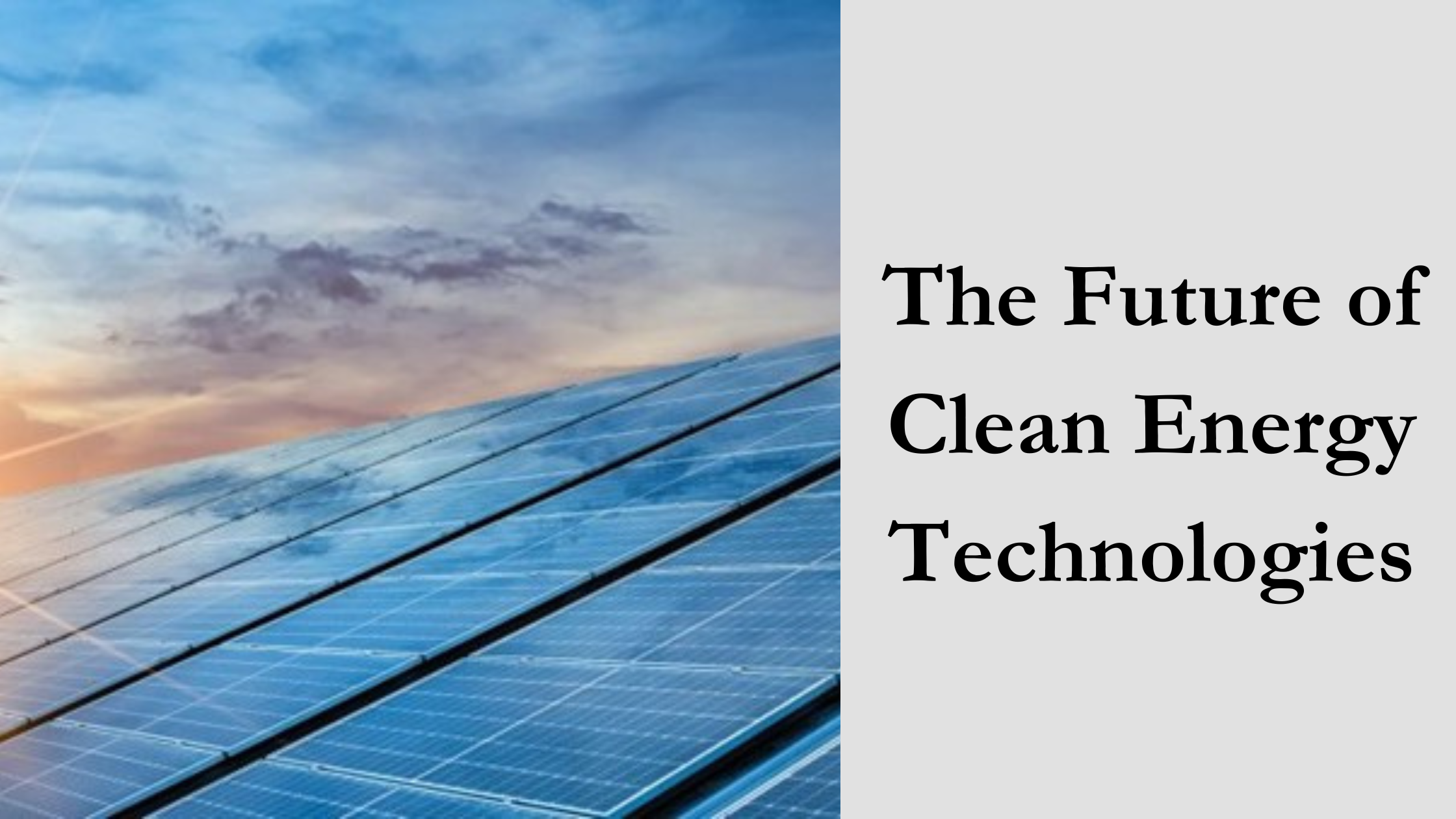It is obvious that investment and innovation in clean energy technology are more crucial than ever as the world moves to quickly reduce its dependence on fossil fuels.
The World Energy Investment report, just released by the International Energy Agency (IEA), examines the progress made globally in realizing clean energy transitions with a focus on investment. The 2023 report provides a thorough update on the 2022 investment outlook and includes preliminary forecasts for the future. The analysis identifies certain definite advantages of investing in sustainable energy, but it also foresees significant risks.
The report’s major finding is that spending on fossil fuels is being outpaced by investments in clean energy technologies. This is explained by a rise in demand for more environmentally friendly solutions brought on by recent societal events that have raised questions about affordability and security. According to the analysis, annual investments in clean energy are predicted to increase by 24% between 2021 and 2023, compared to merely a 15% increase in investments in fossil fuels. The IEA has underlined that this offers a risk of new dividing lines in global energy if clean energy transitions elsewhere do not speed, despite the fact that over 90% of this rise is coming from advanced nations and China.
The Innovation Platform met with Simon Bennett, an energy technology analyst at the International Energy Agency, to learn more about the report’s results and the value of innovation in clean energy.
How Critical Is It That Clean Energy Technology Continue To Advance?
Despite being fundamental to our attempts to achieve net zero greenhouse gas emissions by the middle of the century, this subject is frequently misunderstood and poorly explained. The extremes of the spectrum’s supporters assert things like, “We already have all the technologies we need to decarbonize energy,” and “Transitioning to clean energy will be too expensive until innovation delivers better types of technologies.” These kinds of assertions, sadly, are not helpful for investors and politicians who must choose which new technology to invest in and what risks to take in the public good.
You Create Routes At The International Energy Agency To Get The World On The Right Track For A Clean Energy Future. How Do You View The Requirement For Innovation?
In general, we believe it is crucial to divide it into three parts, each of which we independently examine.
First and foremost, we are aware that technological innovation is fundamental to both our society and the economy. We have reached a stage where we are convinced that we can prevent the worst effects of climate change because to the power of innovation. The cost of a solar module decreased by more than 90% between 2009 and 2019 because to research and development (R&D), regulatory support, startup capital, and competition amongst manufacturers, to the point where we can count on it becoming the foundation of many non-fossil energy systems. Parallel to this, high-risk investments in innovation gave rise to nuclear energy, which is currently experiencing a rebirth of fresh concepts. Even for well-established products, technical advancements will come as market potential for sustainable energy technology expand.
Solar photovoltaic (PV) and wind power surpass one third of all energy supplies in the IEA Net Zero by 2050 Scenario for the world by 2050, which equates to 5% annual market growth and is impractical without constant design adaptation to make them competitive for more consumers in ever-increasing applications. Over the following three decades, solar becomes 60% less expensive in this scenario. Governments need to provide innovators with the finest conditions possible so they can continue testing improvements to cells, modules, goods, and installations, even though we don’t need to know exactly what scientific advancements will support this. The same is valid for batteries, EVs, heat pumps, home energy management systems, and other similar devices.
The IEA’s examination of the net zero challenge also revealed that the range of commercially available technologies has a cap on the amount of fossil fuel emissions that can be avoided by 2050. Our technology portfolio needs to be completed by goods and procedures that can speed up the adoption of renewable energy in industries like the manufacture of steel and cement, aviation, and shipping, as well as the deployment of CO2 capture and storage to address pollution that cannot be adequately or quickly addressed by renewable energy alone.
There are ways to reduce all of these pollutants, according to our Clean Energy Technology Guide, which monitors the state of clean energy technology around the world. However, several of the essential pieces of equipment have not yet undergone sufficient testing at a commercial scale in a market-driven context. We estimate that half of the fossil fuel emissions that need to be avoided by 2050 do not yet have ‘off-the-shelf’ technology due to the sheer amount of CO2 emitted by some of these sectors—for instance, steel and cement account for 14% of the global energy-related CO2 today. The good news is that several of these, such direct air CO2 capture and iron ore reduction using hydrogen, are developed sufficiently to be tested at full scale. Although we have included them in our Net Zero scenario, we have made clear that significant demonstration projects around the world require more than $90 billion in public funding. At the Global Clean Energy Action Forum 2022, a number of nations made encouraging commitments to contribute this money, and we intend to track their development. If realized, these technologies could become bankable and could stand on their own in markets that recognize the costs related to continued usage of fossil fuels.
The third factor relates to how these money are allocated. According to our modeling, emerging markets and developing economies must receive 40% of the investments made in the global energy system for there to be no net emissions by the year 2050. To support expanding populations and ambitions for affluence, these are the nations that require new investments in heavy industry and other infrastructure. We are worried that the developers of renewable energy technologies are not paying enough attention to the unique economic, social, and climatic conditions in many of these nations. High locations are starting to take up the dual challenge of drawing international attention to renewable energy technology for these regions and supporting their local, self-sustaining innovation ecosystems. The G7 leaders committed to continuing to fund R&D and the implementation of clean technology as a crucial enabler of a faster clean energy transition in low- and middle-income countries when they signed the Clean Energy Economy Action Plan in May 2022.
It Was Discovered That Last Year Saw Record-Breaking Levels Of Investment In Sustainable Energy Research And Development. What Does This Reveal About The Government’s And Businesses’ Commitments To Net Zero In Comparison To What Was Anticipated?
In our World Energy Investment 2023 study, we project that in 2022, government spending on clean energy R&D will have reached $35 billion, while business spending will have topped $130 billion. This was a roughly 10% increase in both cases over the prior year and a return to the growth that was present prior to the COVID-19 epidemic. Early-stage venture capital funding for clean energy start-ups increased by 20% during the same time.
Of course, it is impossible to determine the appropriate annual amount to spend on clean energy research due to the broad variation in the effectiveness of spending to accomplish a specific breakthrough and the fact that the fastest advancements usually astound us by coming from unexpected places. The trend is still excellent news, though. It demonstrates that organizations and governments are following through on their commitments to change their energy systems and that they are aware of the positive effects that this kind of innovation can have on both the economy and the environment. It is not a stretch to say that clean energy technologies are one of the major development prospects of the twenty-first century, therefore it is encouraging to see increasing engagement in emerging markets like Brazil as well as more established ones like Australia, China, the EU, Japan, the UK, and the US.
Do You Anticipate Future R&D Spending To Rise Similarly?
I for one would be astonished if the increasing trend did not continue over the coming few years. Finance ministers have so far maintained the course, and the rises in 2022 came about despite strains on public finances from the epidemic and inflation. Businesses in industries like car production are reacting to competitive pressure caused by regulation and consumer expectations for electric vehicles, which are only intensifying. Our chances of a quick energy transition will increase if more money is directed toward important technological issues and efficient innovation platforms.
The only thing I have a doubt about is venture capital investments for startups looking to grow quickly. This significant area of finance has suffered with the macroeconomic shifts over the past 12 months because it places bets on technical variety and enters potential markets in ways that incumbent corporations cannot. Governments can help high-potential businesses stay afloat and innovate, but generally speaking, we might have to endure a short-term setback before a strong recovery. This decade will continue to see strong market expectations for clean energy, which is a stronger prognosis than other tech sectors looking for venture money.
Do Any Specific Segments Of The Market For Sustainable Energy Require More Innovation And Funding In The Future?
From the viewpoint of a technologists, I am encouraged by advancement in several areas. Recently, there has been fantastic news regarding improved geothermal systems for power or heat delivery, and ever since regulatory backing has developed, there has been a steady stream of fresh concepts for producing less expensive hydrogen from clean electricity. I find it inspiring that bright minds are exploring how to incorporate passive energy into building design, such as using materials and architecture to harness the heating and cooling potential of the sun and wind. Experience has repeatedly demonstrated the need for clean energy technologies that cater to people’s preferences, comforts, and individual goals in order to achieve energy efficiency in the built environment.
However, given the urgency of the climate catastrophe, diversification gives us the best opportunity of meeting the challenge. In the end, the large potential may be for products that directly replace waste heat or electricity with fossil fuels. Governments are the only ones in a position to jointly develop a portfolio of choices for each component of the emissions puzzle, working with philanthropists and others. These choices may begin at very diverse stages of development, and new, earlier-stage concepts may be incorporated later. Using hydrogen to replace natural gas as an example, it would be risky to rely on lowering fossil fuel emissions from steel production worldwide without also testing options based on CO2 capture or outside bets like direct iron ore electrolysis.
From a policy standpoint, I think there is a huge chance for governments and investors to share knowledge about the best kinds of initiatives. Around the world, there is a lot of variation in the techniques taken by various programs and legislation, but there is not enough focus on the examination of the factors that raise the likelihood that an innovation will succeed. The issue is urgent, particularly in light of impending significant expenditures in new energy-intensive infrastructure in fast-growing economies that will make the shift more difficult if low-emission options are not cost-competitive. Additionally, this century has seen a significant increase in the heterogeneity of clean energy technologies, which now encompass a wide range of products and services, including digital services like virtual power plants, conventional pipeline infrastructure, and new industries like lithium extraction. Each of them will probably profit from a particular ratio of market incentives, informational access, public R&D grants, and financial tools.
We will continue to incorporate these factors into our enduring connections with stakeholders in all facets of the energy discourse as the IEA approaches its 50th anniversary year in 2024.



